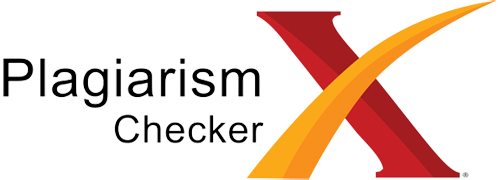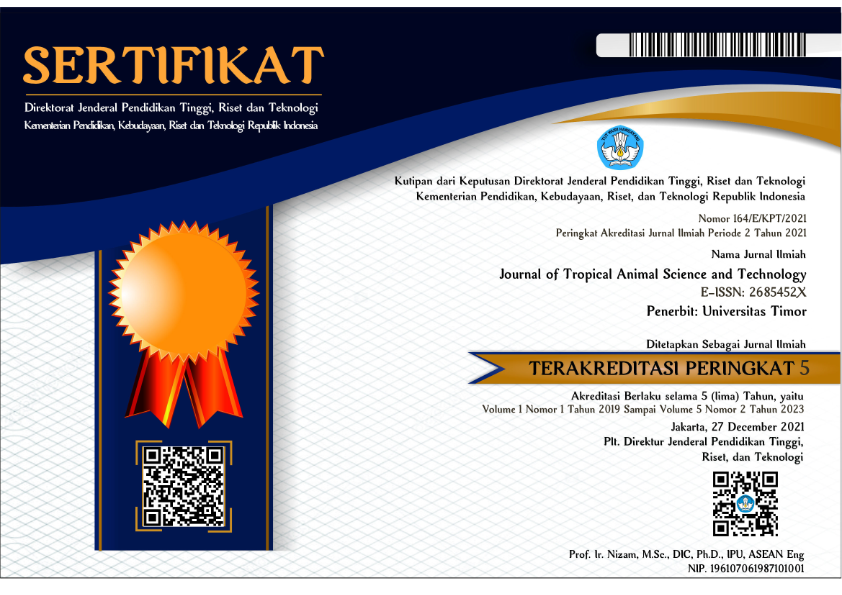THE EFFECT OF GIVING CONCENTRATES CONTAINING KELOR LEAF FLOURS WITH DIFFERENT LEVELS ON NITROGEN UTILISATION OF LOCAL GOAT
DOI:
https://doi.org/10.32938/jtast.v1i1.294Keywords:
Local Goat, Moringa Leaf Flour, Consumption, Digestibility of rumen protein and NH3Abstract
The study aimed to determine the effect of the use of feed concentrates containing Moringa leaf flour on protein consumption, protein digestibility and rumen ammonia concentration. Data were analyzed using a randomized block design (RBD) with 4 treatments and 3 replications, and continued with the Duncan test. The treatments in this study include: K1: Concentrate without the use of Moringa leaf flour; Concentrate with the addition of 10% Moringa leaf flour; K3: Concentrate with the use of Moringa leaf flour 20%; and K4: Concentrate with the use of 30% Moringa leaf flour. The variables determined were Rough Protein Consumption and Digestion and rumen NH3 Concentration. The results showed that protein (g / tail / day) consumption and crude protein digestibility (%) were highest in the treatment of K4: 36.37 and 72.01, then followed by K3: 35.81 da. 71.93; K2: 35.06 and 69.85 and K1: 31.99 and 59.91. The highest rumen NH3 (mM) concentration is also occupied by K4: 19.77 followed; K3: 18.24; K2: 16.48 and K1: 11.16. The results of statistical analysis showed that the treatment had no significant effect (p> 0.05) on consumption and had a significant effect (p<0.05) on the digestibility coefficient of crude protein and rumen NH3. It was concluded that the use of Moringa leaf flour as a constituent component to the level of 30% can be used for animal feed to increase consumption and nutrient digestibility of livestock as well as the provision of rumen NH3.























